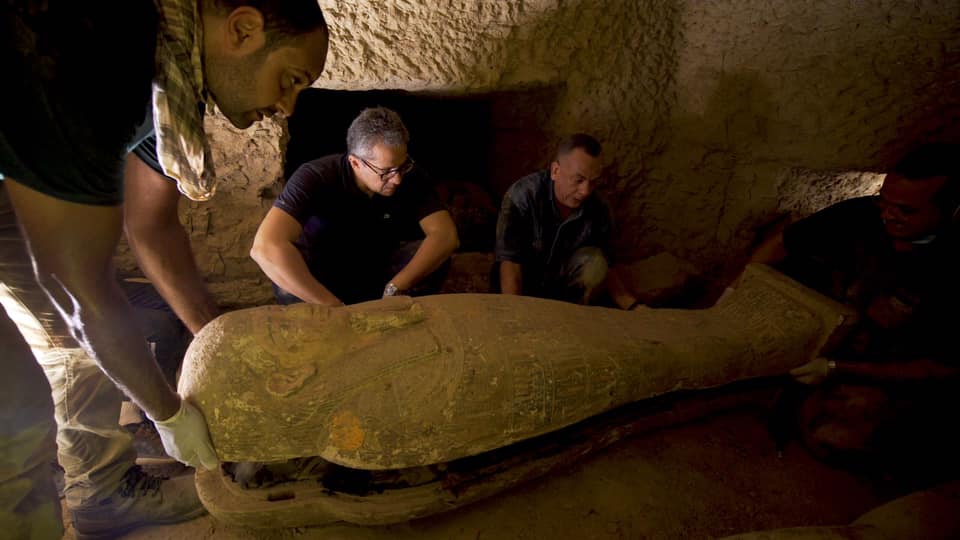Today we have an exiting news about the new discovery in Saqqara, Egypt. Like the buzz of street life in bustling Cairo or the beaming of the Saharan sun, archaeology is an unending fixture of regularity in Egypt, continuing on unabated even in the wake of world-altering events. Though the work is often painstaking and tedious, it’s easy to see why the scientists behind the practice push on tirelessly in the land of the pharaohs: buried here are the sleeping vestiges of thousands of years of human civilization, marked by monuments both megalithic and humble, waiting to be discovered and pieced into the story of history. Progress in archaeology can often be a piecemeal process—but every so often, something is unearthed that causes a stir of excitement.
Earlier this month, Egypt’s archaeological community thrilled at the discovery of at least thirteen intact wooden coffins interred in a burial shaft under the sands of the vast Saqqara complex. The new discovery in Saqqara was found buried atop one another at a depth of almost 40 feet, the coffins are estimated to be about 2,500 years old, placing their origins during the Late Period of Egyptian chronology. This is around the time of the Persian conquest of ancient Memphis and well over a thousand years after the construction of the famous Great Pyramids of nearby Giza—meaning that the coffin’s owners could have been tourists to the pyramids much like modern-day travelers on an Egypt luxury tour.

According to Egypt’s Ministry of Tourism and Antiques, the most exciting part of the find aside from its size is the startlingly superb condition of the coffins—both their exterior facades and, presumably, their interiors. Buried in a dry environment, the wooden coffins were well protected from the elements for the duration of their thousand-years’ rest. Fine carving and design details are still evident, even down to traces of paint on their surfaces. Moreover, the coffins were found perfectly sealed, left in whatever state in which they were interred—a true rarity in an area that has been subject to grave robbing and looting both in the present day and throughout antiquity. Check out this video about the new discovery in Saqqara:
The excavation team from the Supreme Council of Antiquities has also noted three sealed niches in the shaft, promising the potential of more finds in the same spot, and the prudent expectation that this may well be one of the most important digs in recent decades. This find is the largest exhumation since the Al-Asasif cachette in Luxor, itself already the biggest unveiling in a century.
For now, the archaeology world and tourists alike wait with bated breath for any further discoveries from the Saqqara dig—including any elements that would help to ascertain the identities of the coffins’ long-rested occupants, and the locations where travelers on an Egypt guided tour might be able to see the recovered artifacts.
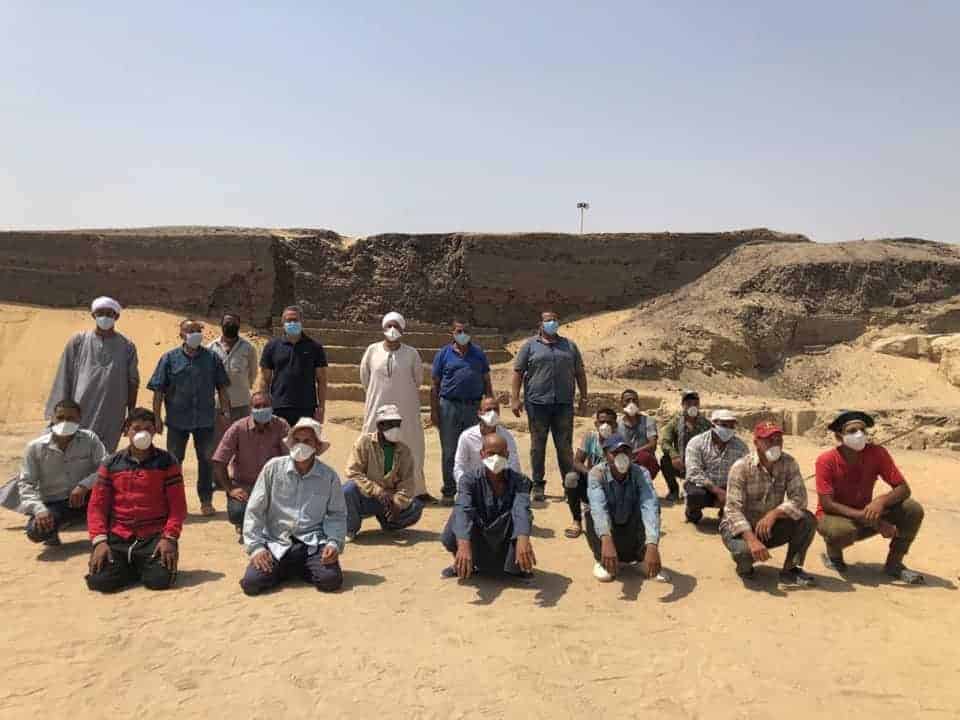
Archaeology and Tourism in Saqqara
Saqqara is certainly no novel territory in the field of Egyptian archaeology. This sweeping expanse of desert located about 20 miles south of Old Cairo served as the necropolis for the ancient Egyptian capital of Memphis for thousands of years and is a region of frequent investigation and discovery.
Even as recently as April 2020, the area had roused attentions with the unearthing of four wooden coffins and five stone sarcophagi, accompanied by a fantastic assortment of faience ushtabi figurines, in a subsection of the necropolis known mostly for its sacred animal burials. A year prior in April 2019, the unveiling of the 4,000-year-old, 5th-dynasty tomb of Khuwy created some notable fanfare—and some 8 years before that in 2011, the revelation of over 8 million mummified animals near the temple of Anubis proved a stunning and historically informative finding. But 2018 was the year of major advances: the improbable recovery of a rare gilded burial mask that somehow escaped millennia of grave robbing, the exploration of the preserved funerary chapel of 24th-century BC vizier Merefnebef, and the location of seven ancient tombs from the 5th dynasty (three of which were dated at over 6,000 years old). December of 2018 brought the excavation of the 4,400-year-old tomb of Wahtye (variously Wahti or Wahty), a 5th-dynasty nobleman whose colorfully decorated resting place can now be experienced not only by those on an Egypt luxury tour, but by anybody with an Internet connection via an innovative virtual tour from the Ministry of Tourism and Antiquities.
And while Saqqara is often recognized for its ongoing scientific research, its draw for tourism is the source of most of its contemporary fame. Here, visitors on ancient Egypt tours can witness a number of timeworn monuments from the Old Kingdom of Egypt, including the earliest large-scale stone construction in the nation’s lengthy history.
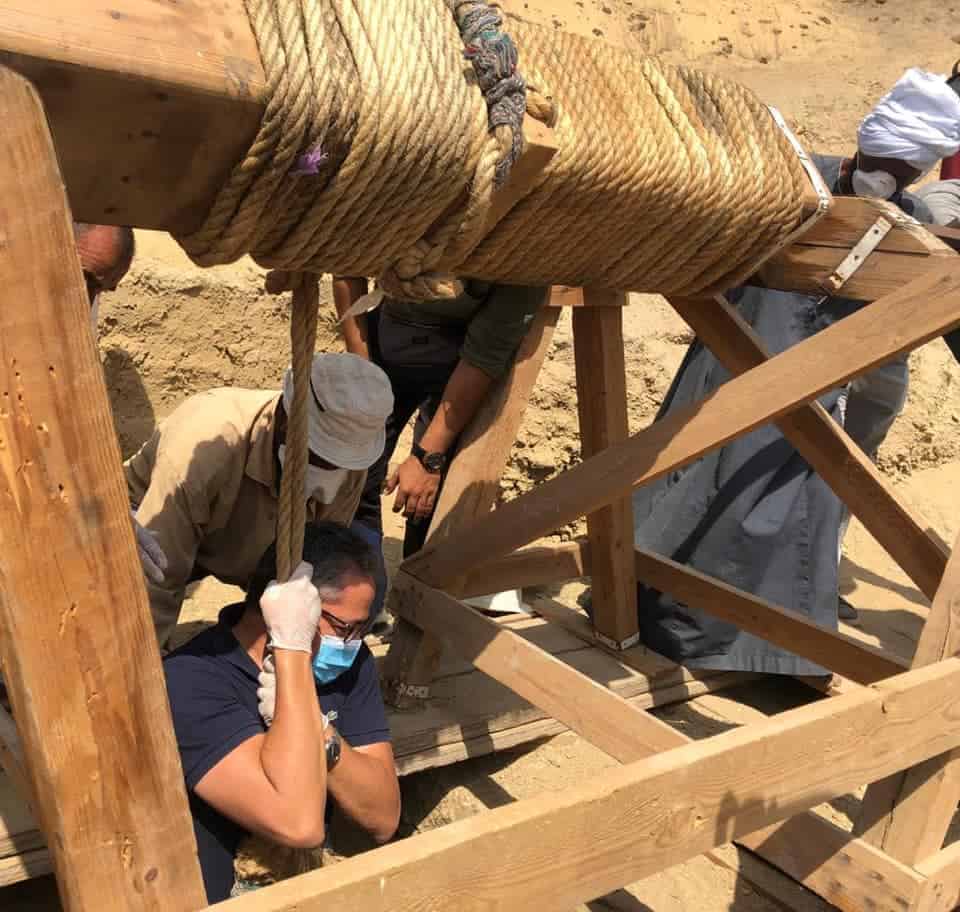
The weather-humbled pyramids of Unas and Teti are now little more than rubbled mounds, but they bear the earliest known inscriptions of the sacred Pyramid Texts within their array of intact underground passageways. In the mastabas of Ti and Mereruka, one can see the privileged lifestyles and legacy of the eponymous 5th-and-6th dynasty nobles in their extensive mortuary estates, still vibrantly decorated after over 4,000 years. And the sacred Apis bulls of the cult of Ptah rest eternally in the capacious Serapeum, where over 60 of the mummified bovines line the subterranean halls in gargantuan granite sarcophagi.
Saqqara’s crowning jewel, however, is the venerable Step Pyramid of Djoser—built by the 3rd-dynasty pharaoh Djoser and his esteemed architect Imhotep in 2670 BC, the 60-meter limestone structure is the oldest extant cut-stone monument in the world. Aside from its preeminent seniority, the Step Pyramid is noteworthy for its then-innovative architectural style. The most elaborate funerary erections of the time, as seen in the aforementioned tombs of Ti and Mereruka, were mastabas: typically single-story buildings of mudbrick with gently sloped walls. Imhotep’s architectural opus in Saqqara was essentially a series of quarried-limestone mastabas stacked atop one another, shrinking in footprint as they ascended. The emergent triangular profile, never seen before in Egypt, was soon to be emulated to awesome and enduring effect in a series of monuments just north of Saqqara, now emblematic of Egypt the world over: the Great Pyramids of Giza.
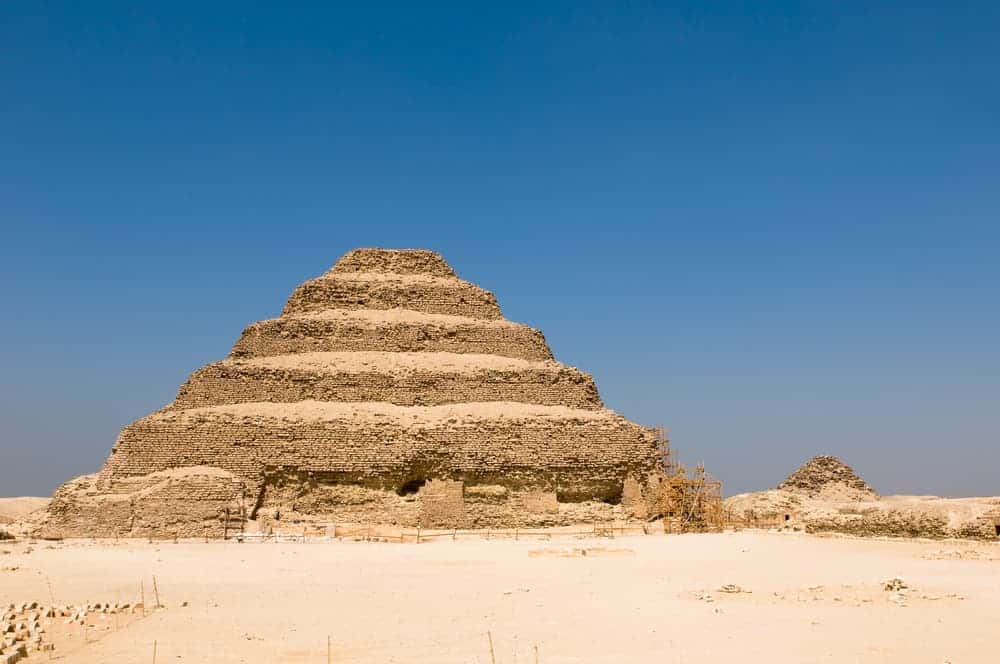
Giza and the Great Pyramids
At the southwestern edge of Cairo, and just over 10 miles north of vast Saqqara, the Giza Plateau is the origin of some of the most instantly recognizable images of any place in the world. Home to the Great Pyramid of Giza (also known as the Pyramid of Khufu), the mighty pyramids of Khafre and Menkaure, the Great Sphinx, and numerous other complexes and villages, Giza is an inestimable treasure of cultural and worldly significance.
Like Saqqara, Giza is also a hotbed of archaeological research—ongoing digs have revealed recent developments like a mysterious and unseen hollow within the Great Pyramid and an unexcavated cemetery dating back 4,500 years—but there’s no denying that the bulk of Giza’s popular fame comes from its status as a massive beacon of international tourism.
Visitors on Egypt guided tours flock by the millions each year to witness the absolute majesty of the Great Pyramid of Giza. Towering almost 140 meters over the Western Desert for more than 4,500 years, the Great Pyramid was the tallest man-made structure in the world up until the 14th century AD, and is the only of the Seven Wonders of the Ancient World still standing. Only smaller in stature by a relative measure (the pyramid of Khafre only by a few meters), the adjacent pyramids of Khafre and Menkaure have stood on this grand stage alongside the Great Pyramid since the middle of the 26th century BC and often make for a less crowded—again, relatively—experience for sightseers on unique Egypt tours hoping to explore the pyramids’ passageways and chambers.
Laying in silent repose nearby, the enigmatic Great Sphinx has puzzled tourists and scientists alike for well over one hundred years. Since its discovery and excavation between the late 18th and early 19th centuries, an abundance of circumstantial evidence has provided insight into the date of its creation and the identity of the visage atop the leonine body—but no ancient inscription nor steele yet found from the Old Kingdom makes reference to the Sphinx’s reason for being nor manner of making. Though “the pharaoh Khafre” and “the 26th century BC” are the generally agreed upon answers to the Sphinx’s riddles, tourists on ancient Egypt tours gazing up at that solemn face are free to consider the many fringe theories—or reason out some of their own.
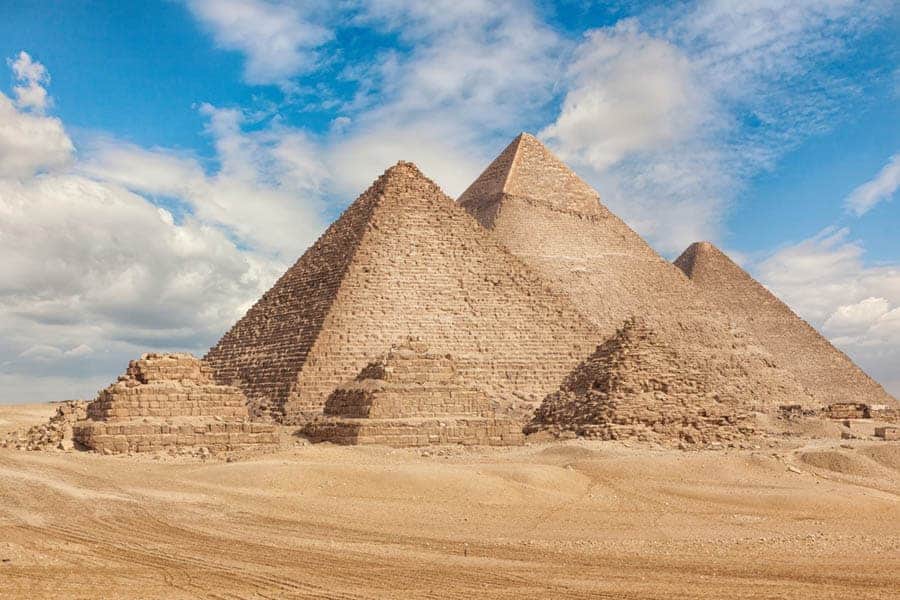
Egypt Re-opens All Historical Sites
While dedicated archaeologists have continued to search for evidence and historians have striven with unabated effort to work out the stories of Egypt’s voluminous antiquity, tourism over the past year has fallen off considerably. The COVID-19 pandemic has had serious, long-lasting impacts on travel and tourism worldwide, and Egypt has felt the effects of reduced activity as much as anywhere. Sensible and stringent measures for containing the virus’ spread enacted early in the year included forced closures of many tourism industry staples—from hotels to restaurants to the many monuments of antiquity themselves.
In May of 2020, the Egyptian Ministry of Health pursued a gradual reopening plan for the tourism and hospitality industry with a series of careful precautions for maintaining safety. Three months on, COVID cases in Egypt have declined significantly even while the industry approached normal operation. And now, as of September 1st, Egypt’s Ministry of Tourism and Antiquities has completely reopened all museums and archaeological sites across the country—with proper mask-wearing and social distancing guidelines firmly in place.
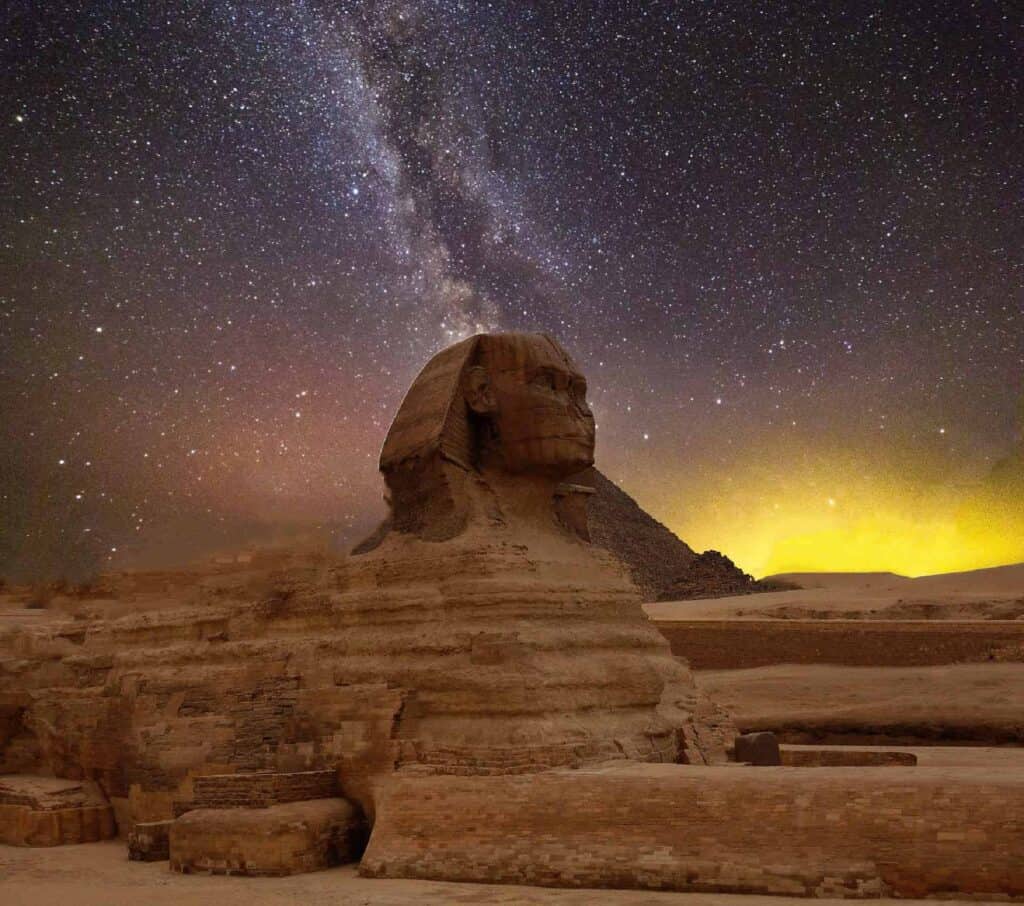
So, when you’re ready to stride across the sands of Saqqara, ride camelback towards the Great Pyramid, or stand in the shadow of the Sphinx, let us create a perfect and unique Egypt tour just for you.
Happy Travels!
